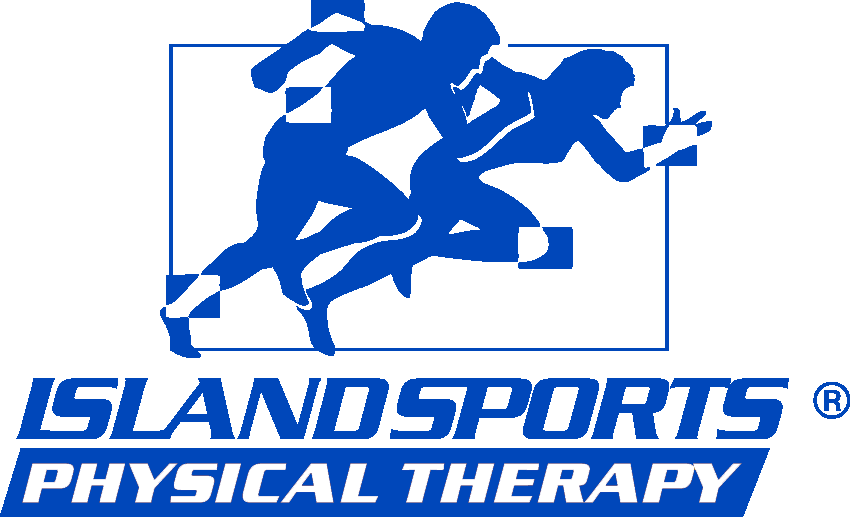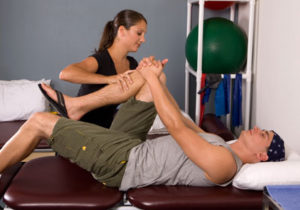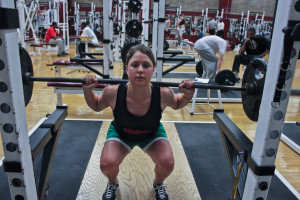Ankle Fracture Treatment in Huntington
Ankle injuries are the most common type of bone injury. A broken ankle, or ankle fracture, means that one or more bones or ligaments in the ankle are damaged. Depending on how many bones are broken, ankle fractures may prevent you from walking properly. Island Sports Physical Therapy in Huntington works to help patients properly recover from and treat ankle injuries.
Some ankle injuries can be healed on their own within a few days. An ankle fracture, however, is more severe than an ankle sprain. Most cases of ankle fractures occur by twisting your ankle, falling, or playing a sport. Symptoms include swelling, severe pain, and bruising.
Treating ankle fractures include:
- Ice to reduce swelling.
- Immobilization of the foot.
- Crutches and walking boots.
- Pain relievers.
- Surgery (If required).
When treating an ankle fracture, ice packs should be used alongside pain relievers to reduce pain and swelling. A splint may be worn if the ankle is not out of place in order to immobilize the foot. Crutches and walking boots are required for most severe ankle injuries since it allows the ankle to heal properly without moving it.
Some ankle fractures need to be treated surgically if the bones are out of place. X-Rays must be done in order to determine if the surgery is required or not. It’s only necessary if the ankle is unstable or has a compound fracture. The surgical procedure moves the fractured bones back into place. After surgery, the pain will typically subside after a couple of weeks. The average recovery time for a broken ankle is 6-8 weeks depending on the ligaments and tendons. It is important that you take your time when recovering from an ankle fracture and you shouldn’t put too much pressure on your foot for a couple of weeks after recovery.
ISPT in Huntington helps their patients fully gain strength back in their fractured ankles and work to help regain mobility and stability in their patients. Contact ISPT in Huntington to start the rehabilitation and treatment for your injury.
Autoimmune Disorders and Vestibular Disturbances
There are many critical functions to the inner ear; more than one would expect. The inner ear also called the vestibule, is responsible for a wide variety of important functions in the human body. In addition to hearing, the inner ear is also responsible for maintaining a sense of balance in the body. And as the inner ear is a complex and sensitive area, there are many potential conditions that can cause the ear vestibule to function improperly. Contact Island Sports Physical Therapy in Huntington Station, NY today for more information.
Like the rest of the body, the ear vestibule requires protection from foreign invaders to stay functioning and free of infection. The body’s immune system is responsible for protecting the inner ear, and the rest of the body alike. The immune system attacks any tissue it does not recognize as native, in order to keep the body safe. However, there are some conditions in which the immune system makes a mistake and attacks the body. These are known as autoimmune disorders. While most vestibular conditions are not related to autoimmune disorders, they are not unheard of. Appropriately named, the most common type is known as Autoimmune Inner Ear Disease or AIED. This is usually defined as a type of hearing loss caused by the immune system attacking the inner ear. Along with hearing loss, symptoms can include loss of balance, feelings of dizziness, and ringing sounds in the ear. Typically, only one ear will initially be affected. Eventually, the second ear may experience symptoms ay well.
One of the most common symptoms of vestibular disturbances is the inability to feel balanced. Through a variety of exercises techniques, a physical therapist can help patients restore and maintain balance lost from vestibular conditions. The experts at Island Sports Physical Therapy in Huntington Station, NY can help patients with vestibular conditions, as well as all physical therapy needs. With seven convenient locations around Nassau and Suffolk counties, ISPT can help you get back in balance.
Post-Operative Spinal Rehabilitation
Island Sports Physical Therapy has been treating patients living on Long Island who suffer from spinal conditions and diseases for over 25 years. Island Sports Physical Therapy offers nonoperative and postoperative spinal rehabilitation at their six locations, East Northport, Huntington, Coram, Nesconset, East Meadow, and Glen Cove.
Island Sports Physical Therapy educates their patients on proper motioning exercises in order to help them gain their maximum performance possible. They work with each condition in a way that will benefit each and every patient. With spinal conditions and diseases, such as bulging or degenerating disc, pinched nerves, cervical radiculopathy, tight musculoskeletal, or arthritis, that need rehabilitation, Island Sports Physical therapy will provide you with safe and effective spinal care and postoperative rehabilitation.
Back surgeries take time to heal, and spinal surgeons may have different protocols and training to spinal care than your physical therapist. At Island Sports Physical Therapy we have hands-on-care, strengthening equipment, and at home stretching techniques to lead you on the road to recovery. Our postoperative rehabilitation will properly stretch and strengthen your spine after surgery. It is best to seek physical therapy and postoperative rehabilitation after spinal surgery rather than opting to further surgery.
With the many varieties of spinal conditions, each patient will receive a unique postoperative rehabilitation to fit their needs to recovery. Each stretch and exercise will vary upon the patient. While every patient has a difference tolerance to rehabilitation, the physical therapists at Island Sports Physical Therapy fit the needs of each patient to ensure the best treatment options.
The big questions usually asked by patients is if they would eventually return to normal activity after their surgery. The physical therapist teams at Island Sports Physical Therapy works well with their patients to achieve that goal. They set their patients up with the best exercises and stretching to gain their strength back over time. With the teams hands-on care and individualized exercises, your rehabilitation will lead you towards positive outcomes.
Conditioning For Snowboarding
What better way to make use of the winter time than hitting the slopes with some snowboarding? This fast, adrenaline-soaked sport entices riders from all skill levels, making the mountains one of the most popular destination spots each year. While snowboarding’s popularity is generally based off its fun factor, riders will still tell you about the impending soreness and fatigue that comes along with the intensive activity. Simply put: this sport, like many other, requires a well-conditioned body for proper performance. Lucky for riders, there are sports related training programs out there that include exercises specially designed to help reduce the risk of soreness and avoid an abbreviated snowboarding trip.
One of the most important skills for all snowboarders to hone is balance. Isometric exercises are ideal for improving a rider’s stabilization. A large part of snowboarding is holding one position to ensure balance and since isometric exercises strengthen muscles held in one position, they become incredibly effective.
When the slopes get more intense, a wide array of movements are required to help maintain your balance as well. Dynamic stretching can certainly lead to a better performance for just about any sport, especially snowboarding. Instead of working on your muscles in stationary positions, the dynamic stretching approach incorporates slow, gradual movements for loosening everything up before your activity.
Aside from stretching, aerobic exercises are crucial for conditioning your body for a longer time on the mountain. Whether it’s walking, jogging, running, swimming, or biking, active exercises that focus on cardio will greatly improve your longevity on the slopes.
If you still find yourself in the lodge long before everyone else, you can always visit Island Sports Physical Therapy of Long Island for help. Office locations include Nesconset, East Northport, Huntington, Coram, East Meadow, and Glen Cove. Each center can provide you with the most modern Sports Specific Training programs designed to improve your performance. If you’re an athlete looking for that next step, don’t hesitate to make an appointment, by phone or online, today.
Physical Therapy in Huntington
Island Sports Physical Therapy works hard to achieve the goals of each and every client. Located in Huntington as well five other locations in Nassau County and Suffolk County, Island Sports Physical Therapy is here to educate clients of all ages in order to help them recover physically and mentally.
Physical therapy works to restore your movement and well-being. Services such as supervised workouts, spinal rehabilitation, sports therapy, geriatric rehabilitation, and orthopedic therapy are provided at Island Sports Physical Therapy in Huntington.
Why choose physical therapy? Physical therapy offers a wide variety of benefits and gives an alternative to surgery. Before choosing surgery, physical therapy might be just what you need. There are many conditions that physical therapy can help treat in order to improve motioning and mobility as well as reduce pain and inflammation. Conditions such as meniscal tears, knee osteoarthritis, rotator cuff tears, spinal stenosis, and degenerative disk disease can be treated with physical therapy. This is a huge benefit to those trying to avoid expensive surgeries.
Physical therapy rehabilitates your muscles, joints, and overall movement. Pain-free movement is important in your everyday life in order to allow you to remain fully active. The physical therapists at Island Sports Physical Therapy in Huntington will work with you to provide the necessary exercises and modalities that will achieve this.
In addition, to avoid surgery, physical therapy can help you avoid opioids. Opioids do not treat the problem, they merely mask the pain you are feeling. Long-term opioid can lead to liver and kidney malfunction in addition to life-threatening addiction.
Not only are the physical therapists at Island Sports Physical Therapy in Huntington here to treat your physical well-being, but also to educate you on how to stay healthy, prevent future injuries, and acquire the maximum performance viable. They are here as a wellness coach to help your physical health along with your emotional and social well-being.
Island Sports Physical Therapy in Huntington should be your first step in pain management. With the multiple services provided and their motivated staff that wants to achieve each goal, you know they will help you rehabilitate and achieve your goals. Contact them today!
How to handle a slip or fall
One of the most common accidents people experience is falling. No matter where on Long Island you live, people trip, slip, stumble, and fall for a wide variety of reasons. While some falls are no big deal, a person can sometimes sustain serious injuries from taking a more major fall. While falling is often seen as an element of slapstick comedy, there is another side of falling that is associated with many debilitating injuries that can rob an individual of their independence. Thankfully, there are many steps one can take to reduce their risk of falling, and recover from the injuries sustained from a past fall.
Fundamentally, most falls are caused by an individual having trouble with balance or lower body strength. As people age and their bodies become weaker the risk of falling often increases. By consulting a physical therapist, one can be taught a variety of balance inducing exercises, and learn what parts of their life are increasing their risk of a fall.
Another common factor in falling risk is the environment in which the person lives. If somebody is living in a highly cluttered house, the risk for tripping and falling in increased. It is important to eliminate any hazards in your living space that could be the cause of a dangerous fall.
Another factor that can lead to falls is due to an imbalance associated with head trauma, vertigo, and concussions. These conditions can also be evaluated, and potentially treated through physical therapy. There is a very long list of factors that can contribute to falling. This can make it difficult to pinpoint what exactly caused your fall, or could cause one. To see how a physical therapist can help, contact Island Sports Physical Therapy. The team at Island Sports Physical Therapy with 6 locations including East Northport, Huntington, Coram, Nesconset, East Meadow, and Glen Cove offer a wide variety of services to serve all orthopedic and physical therapy needs.
What is Myositis?
Myositis refers to an inflammation in the muscles tissues, usually caused by an autoimmune condition. In this case, the body’s immune system begins to attack the affected muscle area, causing the body’s white blood cells to attack the tissue of the affected area. Because of this, the area may become inflamed. Myositis is often a side effect of a virus or infection present in the patient. While symptoms of the virus can go away eventually, myositis can begin after the virus has cleared. The most common symptom of myositis is general weakness in the affected muscle area. This is due to the attack on the area by the immune system. Other symptoms may include rash in the area, or fatigue. These symptoms can often be treated through the use of anti-inflammatory drugs. The patient may also be put on antibiotics to fight the initial virus.
Understanding Myositis: Causes, Symptoms, and Diagnosis
Myositis refers to a group of autoimmune diseases that cause muscle damage and inflammation, leading to weakness and mobility issues. Forms of myositis include polymyositis and dermatomyositis, both of which can result in difficulty climbing stairs, lifting objects, or even trouble swallowing. Viral infections and conditions like rheumatoid arthritis can contribute to myositis development. Diagnosing people with myositis often requires blood tests, a muscle biopsy, and other assessments to confirm the type of myositis. Early detection and treatment are crucial for managing symptoms and improving quality of life for those affected by this condition.
Physical Therapy on Long Island
In addition to traditional medicine, specialized exercises can also help manage the pain of myositis. A physical therapist can guide the patient to the right exercises for their particular case of myositis. Exercise can help increase blood flow in the area, improve flexibility, and reduce overall inflammation. While considering exercise to manage myositis, it is critical that the patient does it properly. If exercise on the affected area is done improperly, the patient can risk a more severe injury. An excellent way to prevent these injuries is to visit a physical therapist, and have them recommend the right exercises for your case. While exercise may not cure myositis by itself, it is a very effective way to managing the pain in the long-term. Island Sports Physical Therapy is here to help you with your myositis pain management, and all other physical therapy and orthopedic needs. Island Sports Physical Therapy has been serving many towns on Long Island for various physical therapy services including East Northport, Huntington, Nesconset, Coram, Glen Cove, Riverhead, and East Meadow. See how they can help improve your daily life today!
Physical Therapy for Fractures
In the unfortunate case of suffering a bone fracture, (also known as a broken bone), the injury can be very painful, and the recovery can be very tedious. As the human skeleton has such a large quantity of bones, recovery time and rehabilitation methods will vary. For example, a broken finger should be treated very differently than a broken tibia. After a bone has been fractured, visiting a physical therapist can help make sure your bone is healing properly, and on the right track to functioning normally in the long-term.
For many fractures, a physical therapist can reset the alignment of the affected bone through a process called reduction. This is to make sure the bone is in the right place and does not heal in an improper position. Improper healing could lead to worse complications in the future. In more serious cases, a surgeon may have to surgically cut through the skin and muscle tissue to ensure the alignment is correct. In this case, screws and brackets may be installed to ensure the bone pieces can properly fuse together.
While the bone is healing, patients are often instructed to avoid any movement in the affected area. Because of this, the process of gradually being able to use the said area again can be difficult. A physical therapist can help the patient return their once-injured part faster and properly. Depending on what bone was affected, the patient may be given as an assistive devices such as a sling or a pair of crutches. When at the physical therapist’s office, the PT will assess the progress of your recovery, and gauge how you have progressed in terms of motion, strength, overall pain in the area, etc.. By evaluating where you are in the recovery process, the physical therapist can recommend appropriate exercises, pain management techniques, or proper rest, to make sure the bone recovers correctly.
Island Sports Physical Therapy can help you recover from your recent bone fracture, every step of the way. From reducing the bone, to getting back to full strength, Island Sports Physical Therapy can help you getting moving again, and feeling your best.
What is a S-I Joint Dysfunction?
The sacroiliac joint lacks the motion of elbow and knee joints, yet it sustains injury far more frequently. In comparison to other joints the sacroiliac joint is reinforced by ligaments and is very sturdy, which begs the question of why a joint that is well protected is prone to damage. When we move, lift objects, or are impacted our back serves as a pivot for our body and helps us retain our balance. The lower back or sacral region is the axis of our balance and the joints which hold it in place receive a tremendous about of shock from impact.
For the sacroiliac joint to dysfunction you would need to have an immoderately low or high amount of regular pressure being put on your lower back. By moving infrequently or being in constant motion you may cause dysfunction in your sacroiliac joint. The amount of pressure being put on the sacroiliac joint decides whether or not it will dysfunction, aside from pregnancy increasing risk of sacroiliac joint dysfunction there is no known medical condition that this dysfunction is derived from.
There are several methods of treating sacroiliac dysfunction and the most commonly recommended treatment is physical therapy. A medical professional can administer cortisone injection followed by a numbing agent to reduce the pain and inflammation in your joint. Cortisone is a steroid hormone released by your adrenal glands and may cause a rise in blood sugar or an infection. Physical therapy may require more dedication, but it presents no immediate health risk and not only can physical therapy correct sacroiliac dysfunction it can assist with strengthening the joints to prevent future injury.
If you are looking for qualified physical therapists and service local to Long Island, then consider contacting Island Sports Physical Therapy. With six locations throughout Long Island and an expansive variety of services Island Sports Physical Therapy can assist you with any injuries and complications.
Frozen Shoulder
Adhesive capsulitis, more commonly known as frozen shoulder, is a condition in which the glenohumeral joint (shoulder joint) tissue becomes inflamed. This results in difficulty of motion, and chronic pain in the shoulder area. While the cause of frozen shoulder is unclear to orthopedists and physical therapists, there are a variety of treatment options used by physical therapists to treat this condition.
The condition of frozen shoulder is often classified into three phases:
- Stage one is “freezing.” – This is when pain in the shoulder becomes more severe, and motion is slowly lost.
- Stage two is “frozen.” – At this point, the pain may decrease, but the shoulder is still very stiff.
- Stage three is “thawing.” –At this stage, movement in the affected area slowly improves.
While anti-inflammatory drugs can be used to relieve the pain and swelling caused by this condition, the incorporation of joint mobilization techniques can help get the shoulder moving again. Joint mobilization is a type of physical therapy that applies specific force to the affected joint, in order to restore normal range of motion. This technique utilizes five levels of mobilization, depending on the condition the patient is in.
Island Sports Physical Therapy are the experts in joint mobilization techniques. If you are experiencing frozen shoulder, or any other type of restricted motion in your shoulders, elbows, ankles, knees, hips or neck, consider coming to Island Sports Physical Therapy for an examination. With six convenient locations throughout both Nassau and Suffolk counties, Island Sports Physical Therapy is able to serve the entire Long Island Community.












